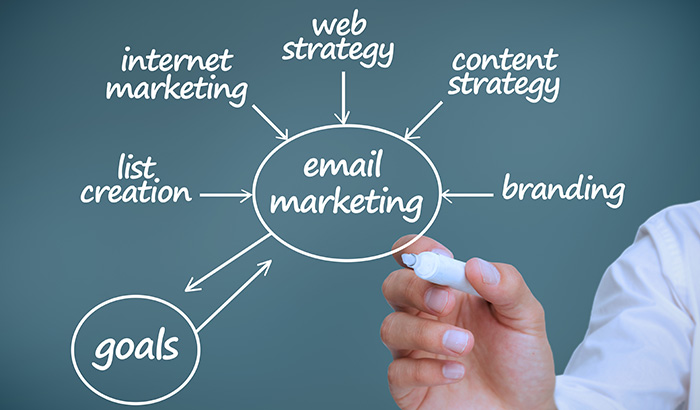With its ability to establish direct communication, foster personalization, and yield substantial returns on investment, email marketing has emerged as a powerhouse tool for eCommerce businesses.
In a world inundated with digital noise and fleeting attention spans, email marketing stands out as a direct channel to reach your audience.
Unlike social media posts that can easily get lost in the scroll, emails provide a dedicated space for your message. This digital directness allows you to engage customers more personally, creating a stronger sense of connection and loyalty.
Personalization is the name of the game in the modern business landscape, and email marketing delivers it in abundance.
By leveraging customer data, purchase history, and browsing behaviors, you can tailor your email content to suit each individual’s preferences and needs. This not only boosts engagement but also significantly enhances the chances of conversions. When customers feel that a brand understands their desires and preferences, they are more likely to make a purchase.
One of the most alluring and financially rewarding facets of email marketing for eCommerce businesses lies in its remarkable return on investment (ROI). When juxtaposed with other marketing channels, the cost-effectiveness exhibited by email campaigns is nothing short of extraordinary.
With a meticulously devised email strategy, your eCommerce venture can unlock substantial revenue growth while maintaining a judicious marketing budget.
The beauty of this lies not only in the revenue potential but also in the ability to meticulously track and measure the far-reaching impact of your campaigns. This data-driven approach grants you the power to engage in perpetual enhancement and optimization, ensuring that every email sent contributes meaningfully to your business’s success.
Customer retention reigns as a pivotal factor for sustained triumph. This is precisely where email marketing steps in as an invaluable ally. Email marketing enables you to forge a robust and enduring bond with your existing customer base through consistent, well-crafted communication and the delivery of genuinely valuable content.
This engagement strategy proves its efficacy by nurturing loyalty and ensuring that your cherished customers return, time and time again, to explore your offerings and engage in further transactions.
The synergy between email marketing and eCommerce isn’t just about sending messages; it’s about building a nurturing connection that resonates with your audience, stimulates purchases, and fosters a community of dedicated brand advocates.
From exclusive offers and product updates to informative newsletters, email marketing provides a versatile platform to keep your customers engaged and excited about your brand.
As we delve deeper into the intricacies of email marketing for eCommerce, you’ll discover the strategies, tactics, and insights that can help you unlock its full potential. From building your email list to crafting compelling content and embracing automation, this guide will equip you with everything you need to leverage the power of email marketing to enhance your eCommerce journey.
So, let’s embark on this enlightening exploration of how email marketing and eCommerce intertwine to create a winning strategy that captivates customers and drives business growth.
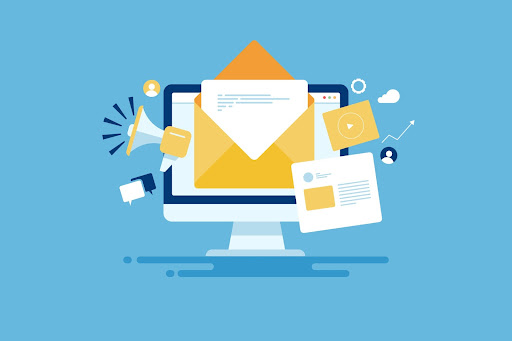
The Power of Email Marketing for eCommerce
In the bustling realm of eCommerce, where competition is fierce and customer attention is fleeting, email marketing emerges as an essential tool that holds the potential to shape the fate of businesses.
Emails offer a unique space where your message takes center stage, free from the distractions that often dilute messages on social media feeds. This direct line of communication ensures that your carefully crafted content, whether it’s product announcements, promotions, or valuable insights, reaches your audience with clarity and impact.
Benefits of Email Marketing for eCommerce
- Direct Communication: Emails provide a channel where your message isn’t lost in a sea of content. They offer a focused opportunity to engage your audience and drive action.
- Personalization: The ability to tailor your email content based on customer preferences, purchase history, and behaviors sets email marketing apart. This personal touch creates a connection that resonates with recipients, leading to higher engagement and conversion rates.
- High ROI: In terms of cost-effectiveness, email marketing shines brightly. With a well-crafted strategy, the return on investment can be impressive. The ability to track opens, clicks, and conversions allows for continuous refinement, ensuring you get the most out of your efforts.
- Customer Retention: The eCommerce landscape is not just about acquiring customers; it’s about retaining them. Emails allow you to nurture existing relationships, offering exclusive deals, personalized recommendations, and valuable content that keeps your customers engaged and loyal.
- Data-Driven Insights: Email marketing provides a treasure trove of data that can inform your broader eCommerce strategy. You can gain valuable insights into customer behavior, preferences, and trends by analyzing open rates, click-through rates, and conversion metrics.
Building Your Email List
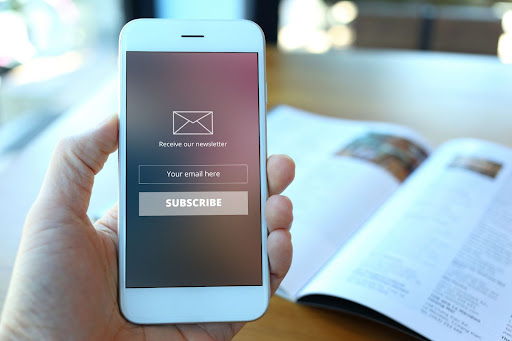
In the intricate tapestry of email marketing for eCommerce, your email list serves as the foundation upon which your campaigns are built. It’s not just about quantity but quality and permission-driven engagement. Let’s delve into the strategies, principles, and techniques to help you build a robust and engaged email list.
Strategies to Collect Email Addresses
- Website Opt-Ins: Your website is a goldmine for collecting email addresses. Implement prominent opt-in forms on strategic pages such as your homepage, product pages, and blog posts. These forms should offer clear value propositions that encourage visitors to subscribe.
- Pop-Ups and Exit-Intent Overlays: Utilize tastefully designed pop-ups and exit-intent overlays that capture visitors’ attention when they are about to leave your site. Offer incentives such as discounts, free resources, or early access to entice them to subscribe.
- Gated Content: Offer valuable content such as eBooks, whitepapers, or exclusive guides in exchange for email addresses. This strategy builds your list and positions your brand as an authority in your niche.
- Contests and Giveaways: Run engaging contests and giveaways that require participants to provide their email addresses. Ensure the prizes align with your target audience’s interests to attract relevant subscribers.
- Social Media Integration: Leverage your social media platforms to drive email sign-ups. Include a sign-up link in your social media bios and post engaging content that directs followers to your email subscription page.
Obtaining explicit permission is the cornerstone of ethical email marketing. Not only is it a matter of respecting your subscribers’ preferences, but it’s also a legal requirement in many jurisdictions.
Regulations like CAN-SPAM dictate that you must obtain consent before sending commercial emails. This U.S. legislation establishes a set of rules governing commercial email communication.
CAN-SPAM mandates that businesses obtain explicit consent before sending commercial emails to recipients. This consent must be transparently obtained and respected, allowing recipients to easily opt-out from further communication.
Infringements of these regulations can lead to substantial financial penalties, potentially derailing your budget and eroding your brand’s credibility.
Tips for Creating Compelling Opt-In Incentives and Subscription Forms
- Clear Value Proposition: Clearly communicate the benefits of subscribing. Whether it’s exclusive access to deals, educational content, or personalized recommendations, your value proposition should be irresistible.
- Minimalism and Clarity: Design your subscription forms with a clean and minimalist approach. Avoid overwhelming visitors with too many fields or distractions.
- Visibility: Place your opt-in forms where they’re easily noticeable. However, avoid being intrusive or obstructive to the user experience.
- Mobile-Friendly Design: A significant portion of internet browsing occurs on mobile devices. Ensure your subscription forms are optimized for mobile users.
- Segmentation Options: Provide options for subscribers to choose their preferences. This helps you segment your list and deliver relevant content, enhancing engagement.
- Trust Signals: Display trust badges, privacy policy links, and assurances that their data will be handled securely and respectfully.
Building your email list is not a one-time endeavor; it’s an ongoing process that requires a strategic approach and a commitment to providing value to your subscribers. As we continue our journey into the realm of email marketing for eCommerce, we’ll uncover more strategies and insights that will empower you to create and nurture a thriving email community.
Segmentation and Personalization
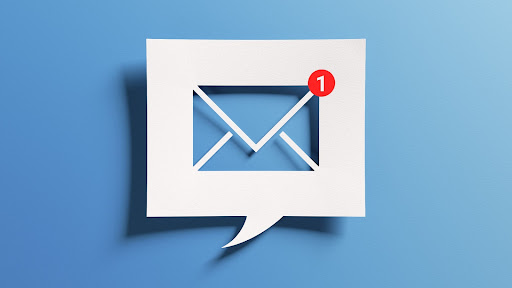
One-size-fits-all approaches often fall flat. This is where segmentation and personalization take center stage, enabling you to craft tailored messages that resonate deeply with your audience. Let’s explore the pivotal role of segmentation and the art of personalization in maximizing the impact of your email campaigns.
Segmentation involves dividing your email list into distinct groups based on shared characteristics, behaviors, and preferences. The significance of segmentation lies in its ability to deliver relevant content to the right people at the right time. It’s not just about sending emails; it’s about sending the right emails to the right recipients.
Tips for Effectively Segmenting Your List
- Demographics: Divide your audience based on demographic factors such as age, gender, location, and occupation. This information provides a foundational understanding of your subscribers.
- Purchase History: Categorize subscribers based on their past purchasing behaviors. This allows you to send personalized product recommendations, cross-sell or upsell offers, and loyalty rewards.
- Browsing Behavior: Analyze how subscribers interact with your website. Send targeted emails based on the products or categories they’ve shown interest in, nudging them closer to making a purchase.
- Engagement Level: Segment your list based on engagement metrics like opens and clicks. This enables you to re-engage inactive subscribers with special offers or content that aligns with their interests.
- Lifecycle Stage: Tailor your messages to where subscribers are in their customer journey, whether they’re new prospects, first-time buyers, or loyal customers.
Personalization Techniques
- Dynamic Content: Embed dynamic elements in your emails that change based on the recipient’s data. This could include showing different products based on their preferences or local weather updates.
- Product Recommendations: Leverage data-driven algorithms to suggest products similar to what the recipient has previously shown interest in or purchased.
- Tailored Messaging: Craft emails that resonate with specific segments. Speak their language, address their pain points, and offer solutions that align with their needs.
- Subject Lines: Personalize subject lines to catch the recipient’s attention. Use their name or reference their recent interactions to increase open rates.
- Behavioral Triggers: Set up triggered emails based on actions like abandoned carts or completed purchases. These timely messages capitalize on user behavior for maximum impact.
Personalization isn’t just about making subscribers feel special; it’s about delivering content that genuinely adds value to their lives. You create a dynamic email experience tailored to each individual by leveraging segmentation and personalization.
Crafting Compelling Email Content
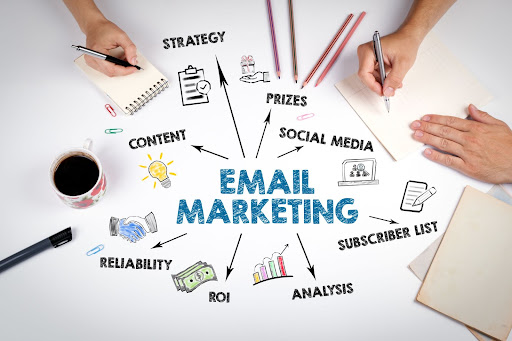
The content you deliver is the heartbeat of your campaigns. From capturing attention with subject lines to nurturing relationships with persuasive copy, let’s uncover the diverse types of emails in eCommerce marketing and the art of creating content that captivates and converts.
Types of Emails in eCommerce Marketing
- Welcome Series: A warm introduction to your brand for new subscribers. Use this series to set expectations, showcase your value, and encourage the first purchase.
- Product Recommendations: Leverage customer data to suggest products based on their preferences and past interactions, enticing them to explore and make a purchase.
- Abandoned Cart Reminders: Gently remind customers about items they left in their cart and offer incentives to complete the purchase.
- Promotional Campaigns: Notify subscribers of ongoing sales, special discounts, or limited-time offers to create a sense of urgency and drive conversions.
- Newsletters: Share curated content, industry insights, company updates, and exclusive offers to keep your audience engaged and informed.
Tips for Writing Engaging and Persuasive Email Copy
- Know Your Audience: Understand your audience’s needs, pain points, and desires. Tailor your message to resonate with them.
- Compelling Headlines: Your subject line should be enticing and relevant. It’s the first impression determining whether your email gets opened.
- Clear and Concise: Keep your email content concise and to the point. Use short paragraphs, bullet points, and subheadings for easy readability.
- Emphasize Benefits: Highlight your products or services’ benefits to the recipient’s life. Explain how they can solve a problem or fulfill a desire.
- Create a Sense of Urgency: Use persuasive language to create a sense of urgency. Limited-time offers or low-stock alerts can prompt immediate action.
- Call-to-Action (CTA): Place a clear and compelling CTA that guides readers toward the desired action. Use action-oriented verbs and make it stand out.
Importance of Attention-Grabbing Subject Lines and Visually Appealing Design
The initial hook that draws recipients in and the captivating visuals that keep them engaged are paramount to success.
- Subject Lines: Your subject line is the first impression you make. Craft it to be attention-grabbing, relevant, and aligned with the content of the email.
- Visual Design: Use an appealing layout that balances text and visuals. Visual elements should enhance the message, not overpower it.
- Responsive Design: Ensure your email is optimized for mobile devices. A significant portion of recipients will open emails on their phones.
- Branding: Maintain consistent branding elements such as colors, fonts, and logos to reinforce your brand identity.
- Whitespace and Readability: Leave ample whitespace for a clean and organized appearance. This enhances readability and prevents visual clutter.
Crafting compelling email content is an art that combines psychology, communication skills, and an understanding of your audience. Each element, from the subject line to the call-to-action, is crucial in guiding your subscribers toward meaningful actions.
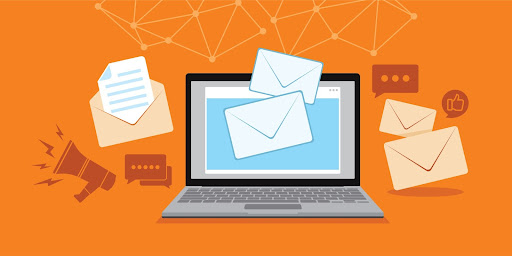
Automating Emails
Email marketing automation involves using technology to streamline and send your email campaigns based on predetermined triggers or actions. It’s about delivering the right message to the right person at the right time without constant manual intervention. Automation saves time and enables you to deliver personalized and relevant content consistently.
Benefits of Automation
- Time-Saving: Automation eliminates the need for manual sending, freeing up your time to focus on strategy and creativity.
- Consistent Communication: With automation, your subscribers receive consistent content, ensuring that your brand remains top of mind.
- Triggered Emails: Send emails based on specific triggers, such as user behavior or milestones, creating timely and relevant interactions.
- Lead Nurturing: Nurture leads with automated sequences that gradually guide them through the buying journey, building trust and engagement.
- Scalability: As your subscriber base grows, automation allows you to maintain personalized communication without added effort.
Examples of Automated Email Workflows
- Welcome Flow
Trigger: Visitor subscribes to pop-up in exchange for an incentive (e.g. discount).
Goal: To provide an introduction to the business and encourage the first purchase. - Post Purchase Flow
Trigger: Customer places first order.
Goal: To thank new customers, provide product guidance, and upsell. - Abandoned Cart Flow
Trigger: The checkout process is not completed.
Goal: To encourage checkout. - Winback Flow
Trigger: Customer passes the expected date of the next order.
Goal: To encourage lapsed customers to repurchase. - Re-engagement Flow
Trigger: Potential customer completes welcome flow but doesn’t convert.
Goal: To encourage first purchase. - Review Collection Flow
Trigger: Purchase is made.
Goal: To collect reviews.
Automation doesn’t replace the human touch; it enhances it by allowing you to engage with your audience more efficiently and effectively. By leveraging automated email workflows, you create a seamless experience that nurtures relationships and drives conversions while allowing you to focus on strategic growth.
A/B Testing and Optimization
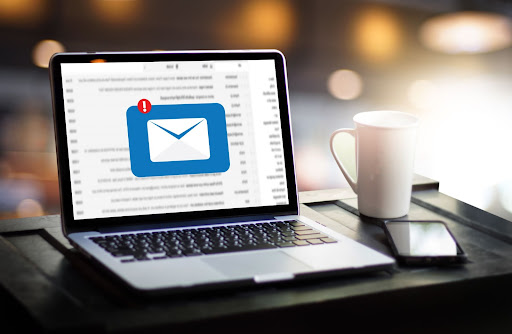
A/B testing, or split testing, is a powerful tool that empowers you to make data-driven decisions that enhance your campaigns. It involves sending two versions of an email to a small portion of your list to determine which version performs better.
The insights gained from A/B testing guide you in making informed decisions that optimize your email marketing efforts. Continuously testing and refining ensures that your campaigns are effective, engaging, and resonate with your audience.
Elements to Test
- Subject Lines: Test different subject lines to discover which ones generate higher open rates. Experiment with different lengths, tones, and personalization techniques.
- Call-to-Action (CTA) Buttons: Test variations of your CTAs to determine which wording, color, size, and placement encourage more clicks.
- Visuals: Experiment with different images, GIFs, or videos to see which visuals resonate best with your audience and drive engagement.
- Sending Times: Test different sending times and days of the week to identify when your subscribers are most active and likely to engage.
- Email Copy: Try variations in your email copy’s tone, length, and messaging to uncover what resonates best with your audience.
How to Analyze and Interpret A/B Test Results
- Define Your Goal: Determine the specific goal of your A/B test, whether it’s to increase open rates, click-through rates, conversions, or another metric.
- Sample Size: Ensure your sample size is statistically significant to draw reliable conclusions.
- Metrics Comparison: Compare the performance metrics of each variation. For example, if testing subject lines, compare open rates.
- Winner Determination: Identify the winning variation based on the set goal. Keep in mind that small differences in metrics might not always be statistically significant.
- Apply Learnings: Apply the insights gained from your A/B test to future campaigns. Implement the winning variations to improve your email marketing strategy.
- Continuous Testing: A/B testing should be an ongoing process. As you gather more data, you’ll better understand your audience’s preferences and behaviors.
When you embrace A/B testing, you foster a culture of continuous improvement in your email marketing endeavors. Each experiment adds a layer of insight that enables you to fine-tune your campaigns for better results.
Avoiding Common Email Marketing Pitfalls

While email marketing offers incredible potential, it’s not without its challenges. Navigating pitfalls like deliverability issues and spam filters and maintaining a healthy subscriber list requires diligence and strategic thinking.
Overcoming Challenges: Deliverability, Spam Filters, and Unsubscribes
Deliverability is the art of ensuring your emails actually reach your subscribers’ inboxes. Factors like sender reputation, content, and engagement rates impact deliverability. Regularly monitor and maintain your sender reputation by following email best practices and adhering to regulations.
Spam filters are designed to protect users from unsolicited and irrelevant emails. To avoid being flagged as spam, use clear subject lines, avoid excessive use of promotional language, and ensure that your content aligns with the recipient’s expectations.
While it’s disheartening to see subscribers leave, providing a clear and easy way to unsubscribe is crucial for maintaining a healthy email list. An engaged and interested audience is far more valuable than a large but disinterested one.
Best Practices for Maintaining a Healthy Email List and Avoiding Spam
- Permission-Based Marketing: Only send emails to individuals who have explicitly opted in to receive them. Avoid purchasing email lists, as this can lead to high unsubscribe rates and spam complaints.
- Double Opt-In: Implement a double opt-in process, where subscribers confirm their subscription. This ensures that the email addresses on your list are valid and interested.
- Regular List Cleaning: Periodically remove inactive or bounced email addresses from your list to improve deliverability rates and maintain engagement.
- Segmentation: Segment your list to send targeted and relevant content to specific groups. This reduces the likelihood of unsubscribes and spam reports.
- Engagement-Based Sending: Monitor engagement metrics and adjust your sending frequency based on how often subscribers interact with your emails.
- Provide Value: Focus on delivering content that educates, entertains, or solves problems for your subscribers. A healthy mix of informative content enhances engagement and trust.
- Limit Promotions: While promotions are essential, an overload of sales-driven emails can lead to subscriber fatigue. Strike a balance between promotional messages and content that adds value.
- Content Relevance: Ensure your content aligns with your subscribers’ interests and preferences. Tailoring content to their needs increases engagement and reduces the likelihood of unsubscribes.
Building a strong reputation and fostering genuine engagement will increase your deliverability rates and enhance the overall impact of your email campaigns.
Measuring Success and ROI
In the data-driven world of email marketing, measuring success goes beyond sending emails and hoping for the best. It’s about understanding the metrics that matter, tracking effectiveness, and demonstrating the tangible impact on your eCommerce business.
Key Email Marketing Metrics
- Open Rates: The percentage of recipients who open your emails. It indicates the effectiveness of your subject lines and the curiosity your content generates.
- Click-Through Rates (CTR): The percentage of recipients clicking links within your emails. This metric gauges the relevance of your content and the effectiveness of your calls-to-action.
- Conversion Rates: The percentage of recipients completing a desired action, such as purchasing or signing up. It reveals how effectively your emails drive desired outcomes.
- Revenue Generated: The amount of revenue attributed to your email campaigns. This metric directly ties email marketing to your bottom line.
Utilize email marketing platforms to track and analyze your campaigns. These tools provide insights into metrics like open rates, CTR, and conversion rates. Compare metrics across different segments to understand how various groups of subscribers respond to your emails.
Track subscribers from email click-throughs to conversions on your website, then identify drop-off points and optimize accordingly.
Staying Ahead of Trends
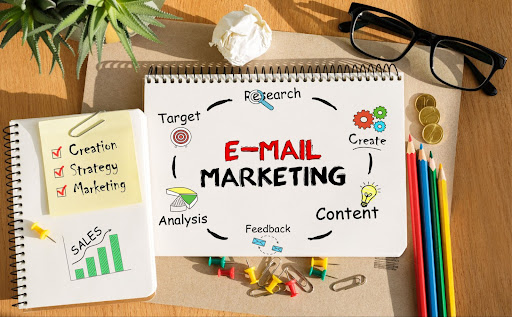
In the ever-evolving landscape of email marketing and eCommerce, staying ahead of trends isn’t just a luxury — it’s a necessity. As consumer behaviors and technological advancements shift, embracing emerging trends can position your brand as a forward-thinking industry leader.
Let’s explore some exciting trends reshaping email marketing and eCommerce and understand why adapting to these changes is crucial for your long-term success.
- Interactive Emails: Gone are the days of static emails. Interactive elements such as quizzes, polls, and product carousels engage subscribers and encourage them to take action directly within the email.
- Mobile Optimization: With a significant portion of emails being opened on mobile devices, optimizing your emails for mobile viewing is imperative. Responsive design ensures a seamless experience across all screen sizes.
- AI-Driven Personalization: Artificial intelligence enables hyper-personalization by analyzing data and predicting customer preferences. This leads to more accurate product recommendations and tailored content.
- Video Content: Incorporating videos into your emails can increase engagement and convey your message in an engaging and visually appealing way.
- Segmented and Triggered Content: The trend of sending timely, relevant content based on user behavior continues to gain traction. Segmented lists and triggered workflows ensure that your emails remain targeted and valuable.
As customers’ expectations evolve, you must adapt your strategies to provide the experiences they demand. Failure to do so could result in disengagement and lost opportunities.
Embracing trends gives you a competitive edge by differentiating your brand from those that are slow to adapt. Being a trendsetter can attract and retain a loyal customer base. Trends often emerge in response to changing consumer behaviors. You can foster higher engagement and stronger relationships by aligning your strategies with these behaviors.
Trends aren’t just for show. They often lead to improved results. Whether it’s higher open rates from interactive emails or increased conversions from AI-driven personalization, staying updated enhances your ROI.
Embracing trends ensures your strategies remain relevant in a rapidly changing digital landscape. It positions your brand for sustainable growth in the long term.
By focusing on emerging trends and willingly adapting your strategies, you ensure your brand remains at the forefront of innovation and customer engagement. As the landscape evolves, your ability to embrace change will be your greatest asset.

Raise Your eCommerce Marketing With Revity
As you embark on your journey to captivate customers and drive business growth, consider the transformative impact of Revity, the premier marketing agency ready to take your online business to new heights.
Revity boasts an exceptional team of experts who specialize in crafting customized strategies that transcend traditional marketing boundaries. If you’re seeking to optimize your social media presence, revamp your website, or fine-tune your email marketing, Revity is your steadfast partner on this journey.
Our agency’s unparalleled expertise and industry knowledge empower us to deliver exceptional results. Whether it’s harnessing the potential of interactive emails, leveraging AI-driven personalization, or staying ahead of emerging trends, Revity is committed to propelling your brand forward.
Call us today at 801-383-0034 and discover how our tailored marketing solutions can elevate your eCommerce endeavors. Your eCommerce journey begins with Revity — where integrity and innovation meet results.

